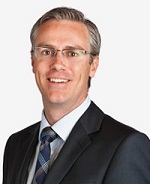The buzz around biotech in Asia has centered on friends and family bootstrap operations in China, local investor support in Taiwan and onto more formal state-backed incubation efforts in Japan, South Korea and Singapore along with boutique venture capital firms and investment arms of multinationals, such as Eli Lilly Ventures.
But a top life sciences venture fund in Australia has launched an A$200 million Medical Research Commercialisation Fund. The fund--which was designed to take good ideas to the market that will bring in massive pension funds earlier in the game and at the least identify hot candidates in Australia that could generate wider interest in Asian biotech--is the largest of its kind.
 |
| Chris Nave, managing director of Brandon Capital Partners |
Chris Nave, managing director of Brandon Capital Partners, said in an interview with FiercePharmaAsia that the timing of the fund's launch does coincide with a U.S. biotech boom that has raised staggering sums for many early stage ventures in biotech from hotspots like Boston and Silicon Valley--but that is not the driving idea.
"We have seen great research efforts in Australia funded by the government and private investors, but not the crossover to translational and that is not because of money," Nave said. "There is no shortage of capital."
The risk culture that has evolved over decades in the United States for biotech investment did not capture the attention of large funds in Australia, which hold an estimated A$80 billion, convincing them to enter early, he said.
"We have seen longer-term investment in mining and the average investor can read a prospectus and understand the risk/reward profile in that sector. That has not happened in life sciences."
To that end, the fund is supported by existing MRCF Investors AustralianSuper and Statewide Super (pension funds are referred to as superannuation funds in Australia), which are now joined by HESTA, an industry super fund for health and community services with $30 billion in assets.
The funds stand ready to add more capital at an earlier stage, Nave said, meaning the A$200 million can stay focused on the earlier stages and additional capital would be available later on if warranted.
Nave said that A$50M of the new fund will be reserved for 20 to 30 very early seed stage investments in promising biotech or medical device technologies. Brandon now has 29 companies in its overall portfolio, Nave said.
"So that leaves A$150M to focus on the most promising portfolio companies to take these opportunities through to mid-stage clinical trials in patients," Nave said. "At that stage, superannuation investors have the opportunity to invest much larger amounts of capital. In fact, this makes the potential pool much larger and these funds recognize the opportunities.
The fund pointed to last year's acquisition of Fibrotech Therapeutics, one of the MRCF's earliest investments, by Shire ($SHPG) as a landmark deal for the Australian biotechnology sector in a deal that paid $75 million upfront and listed milestones worth a potential $482 million. In addition, Nexvet BioPharma ($NVET) listed on the Nasdaq in February in an IPO that raised $40 million and valued the company at over $100 million.
But Nave also said that there is a need to create a buzz about biotech as an investment in Asia where fund raising for innovation in the sector lacks an outlet akin to the Nasdaq where the focus of the market can ramp up potential returns.
"Again, there's no shortage of money in Asia," Nave said. "But it is true biotechs don't receive the valuations they do in the U.S. I think that has to change and there is possibly an opportunity there for a regional exchange, the ASX (Australia Stock Exchange) Singapore or others to educate investors."
- here's the release